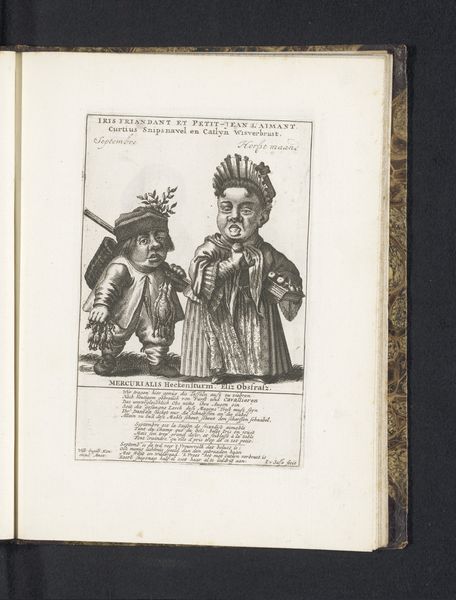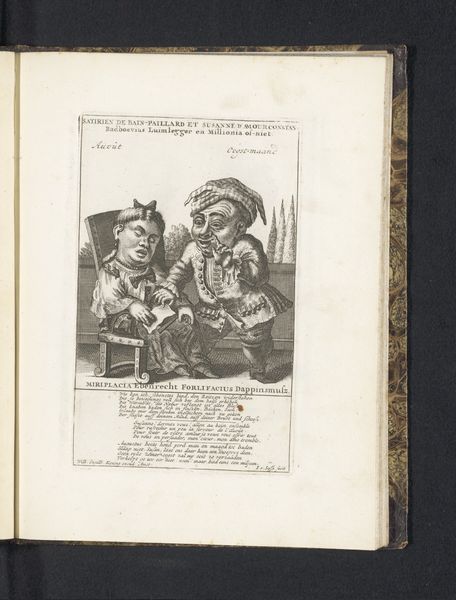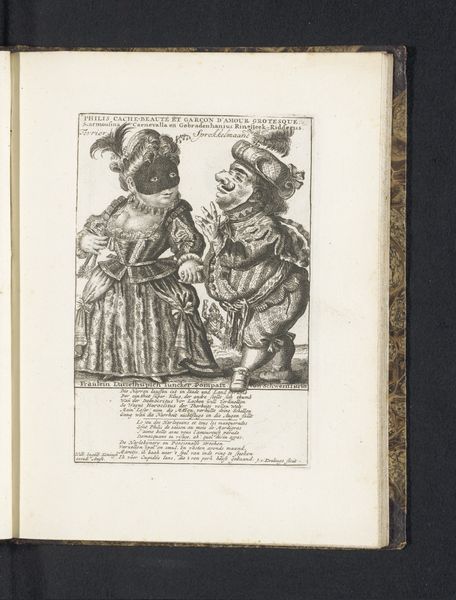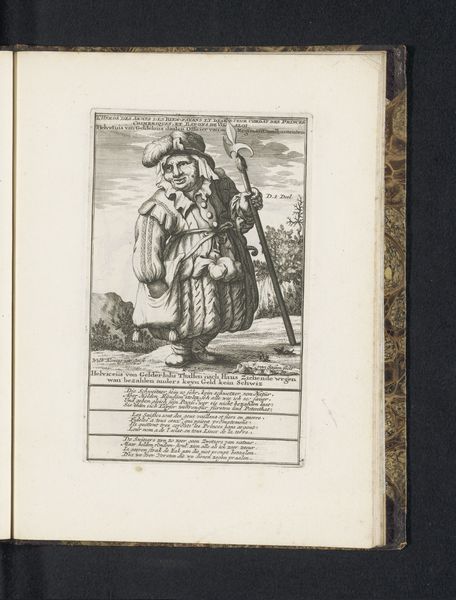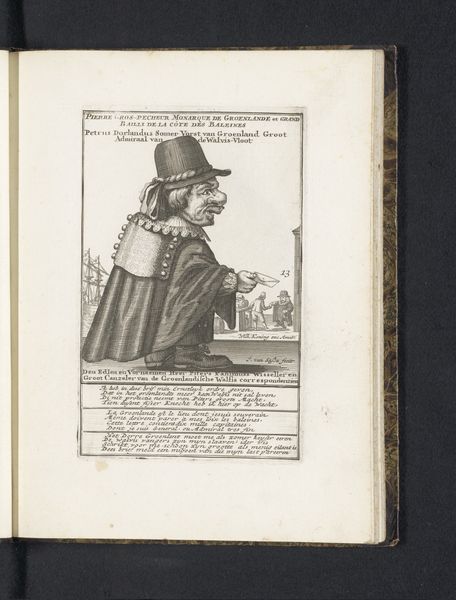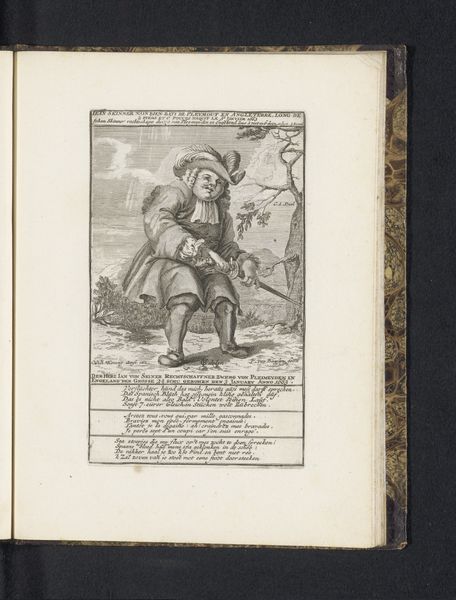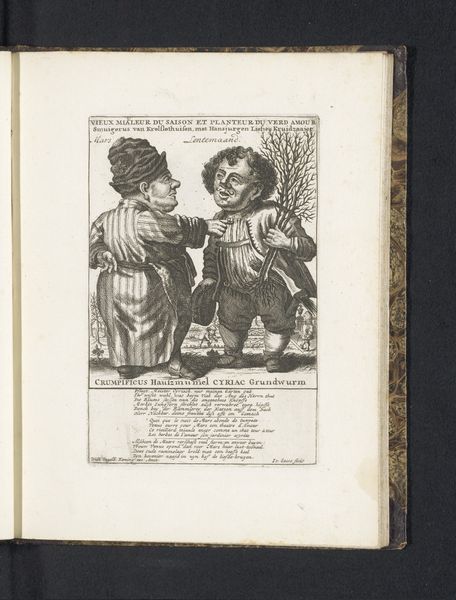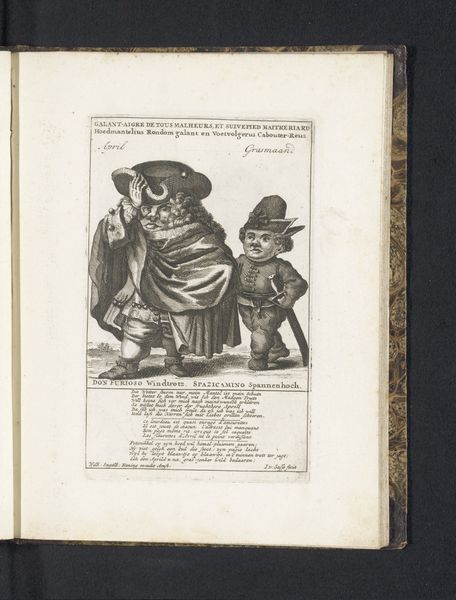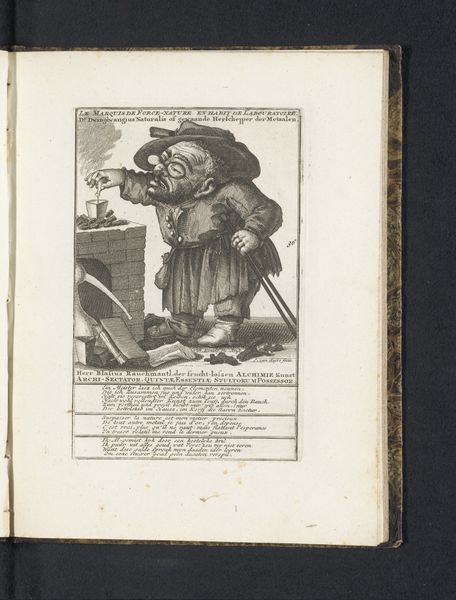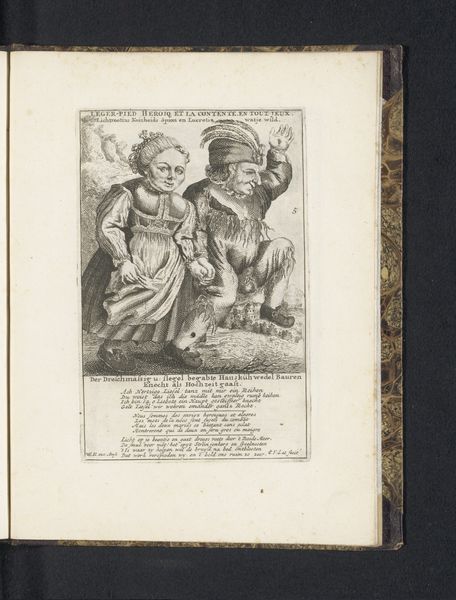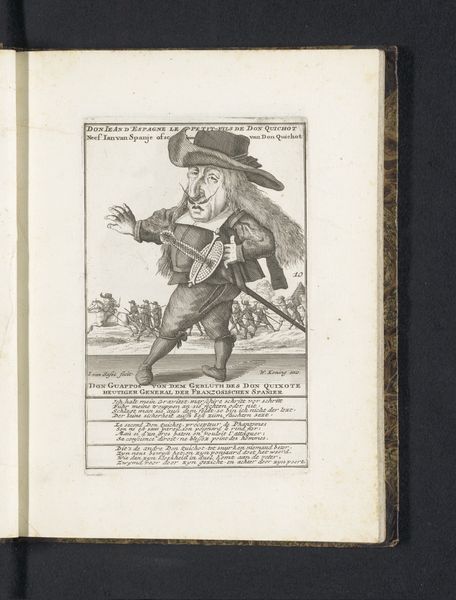
print, engraving
#
portrait
#
aged paper
#
baroque
# print
#
sketch book
#
personal journal design
#
personal sketchbook
#
journal
#
visual diary
#
pen and pencil
#
sketchbook drawing
#
genre-painting
#
storyboard and sketchbook work
#
sketchbook art
#
engraving
Dimensions: height 165 mm, width 110 mm, height 227 mm, width 170 mm
Copyright: Rijks Museum: Open Domain
Editor: Here we have “Two Dwarves for the Month of June,” dating from around 1718 to 1720, by Joost van Sassen. It’s an engraving on what looks like aged paper, perhaps from a personal sketchbook. The figures have a caricature-like quality that is immediately striking. What draws your eye, or how do you approach such a curious composition? Curator: Primarily, my focus rests on the formal relationships established within the pictorial space. Observe how the artist manipulates line and form to create distinct textures and shapes, delineating the figures' garments. The contrasts in hatching and the strategic deployment of blank space generate depth, while also emphasizing specific details like the subjects' facial expressions and their diminutive statures. The text, integral to the piece, contributes to the overall design, framing and balancing the visual narrative. What do you think this balance of image and text suggests? Editor: I suppose it merges the visual with the literary, offering a fuller understanding than either could provide alone? Is it a matter of seeing the image as purely self-contained, or considering how it works within the broader context of the sketchbook as a whole? Curator: Indeed, considering the work within the sketchbook broadens our understanding. However, formal analysis also allows the engraving to be considered within the history of portraiture; how does van Sassen utilise conventional forms while innovating with character and humour? What might that reveal? Editor: That is very true. I was so focused on the surface qualities, I hadn’t fully considered its engagement with art history and social commentary! I’ll definitely be thinking more about composition as a structural tool going forward. Curator: Excellent, I trust your understanding of Joost van Sassen has a firmer footing now.
Comments
No comments
Be the first to comment and join the conversation on the ultimate creative platform.
